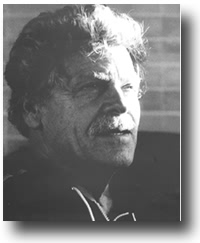![]()
![]()

Costas Tsoclis
|
1930 |
Born in Athens |
|
1942 |
He worked for six years as an assistant in the studios where the large cinema posters were painted, an art form that was flourishing in Athens at that time, and this art was represented by important painters. |
|
1948 |
He entered the Athens School of Fine Arts.Completing his studies he won a state scholarship for three years of post-graduate work abroad. |
|
1957 |
He left for Rome where he studied fresco and encaustic at the Scuola delle Arti Ornamentali. |
|
1958-59 |
He produced a breathtaking amount of work, using anthracite and cement as his materials while his themes, perhaps not always recognizable but nonetheless there, consisted of events connected to the period and elements taken from childhood recollections. Unfortunately, these works, which the artist considers to be the first that are recognizably his, had few opportunities to be exhibited in Italy, if one excepts the two or three exhibitions of the "Sigma' group which Tsoclis had founded with his fellow countrymen Caniaris, Kontos, Nikos and Gaitis. |
|
1959 |
He settled in Paris where for all intents and purposes he would live for the next twenty years |
|
1963 |
He spent three or four psychologically trying and physically exhausting years producing a practically endless series of works which contain a number of surrealistic elements and which would be, perhaps, a parenthesis in his life. |
|
1966 |
He clarified his world view and accepting what was happening around him, the social, natural and artistic phenomena, as the only reality, he constructed his first objects in perspective. |
|
1967 |
He met Michael and Ileana Sonnabend who diffidently began to finance his endeavors. |
|
1971 |
He settled in Berlin for two years, at the invitation of D.A.A.D. This period has left an indelible mark on his life since he found a poetic intensity there unimaginable in smug Paris. |
|
1972-73 |
At the end of 1972 he returned to Paris and in 1973, he began to work in cooperation with Alexandros lolas, an association which lasted for thirteen entire years. |
|
1983 |
He settled into his Athenian studio; he now had a Greek address and a telephone number, and was acquiring new Greek friends. |
|
1986 |
In 1986 with his participation in the 42nd Venice Biennale where he was the sole representative of his country, Tsoclis in essence began to switch from the ordinary objects, materials and natural phenomena found in the street, to the world of myth. |
|
1989 |
He created Medea, a work-environment, l6m.X4m.X7m. This proved to be a landmark in his work for by interpreting Euripides' tragedy naturally and visually Tsoclis proposed, for the first time, a work of art with a limited time to view it in. The work was presented in the city of Troyes in France in 1989, at Treviso in Italy in 1990 and at the Eumenous Stoa in Athens in 1997. |
|
1991 |
There was a unique publishing event: a collector's edition of Homer's Odyssey issued by Diatton Publishing House, in a translation by Professor D. Maronitis. The 24 rhapsodies were printed in 99 copies, each one Ilustrated with authentic water colors by Tsoclis. During this same year Ark was exhibited at the Epikendro Gallery in Patras. A monumental work 9m.X4.50mX4.50m. made of wood, light, sound and wreckage of a boat. This work caught the interest of one hundred and thirty European intellectuals who responded to a letter sent to them by then Minister of Culture Melina Mercouri, replying to the artist's question: what would be worth saving from an impending disaster. And they sent objects or their ideas, which were already being exhibited in the space containing the Ark. |
|
1993 |
In the summer of 1993 in Santorini Card-Players, a performance was realised, which created almost conspiratorial bonds between those in attendance. |
|
1994 |
Ark was exhibited in Brussels and today has its own space, made especially for this work and its contents, in the P. Emfietzoglou Collection in Athens. |
|
1996 |
He staged a performance in the central market of Athens where in addition to the fashioning of the space by the Epikendro Gallery he smashed eight tons of watermelons before the startled eyes of the multitude of spectators transforming what was green into red. |
|
1997 |
In Thessaloniki, Cultural Capital of Europe he realised Artemis, a large unity of works of sculpture, paiting, video and photography and which the Russian poet Andrei Voznisiensky called the most important event in European cultural life. |
|
1999 |
The work Before and After will be exhibited for the first time at the Luigi Pecci Museum. It consists of two pieces, one of which was completed in the spring of 1999 and the other after the September 9 earthquake which in a few seconds was destined to change Tsoclis' life once again. |